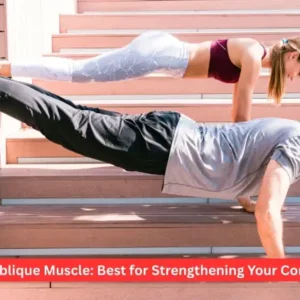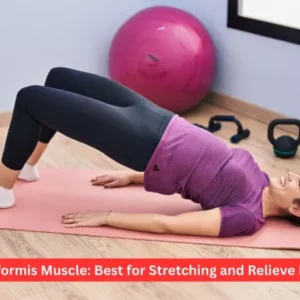How to get bigger forearms? It’s the most common query people ask when they start working on their forearms. The forearms are a large muscle area, but they receive little attention. The wrists tend to move in the opposite direction as your forearms, which can cause pain and swelling in your hands and fingers. Arthritis and other bone- or joint-related disorders can potentially weaken your wrists.
- You need to pay attention to your forearms to make them bigger
- Your bigger forearms can make or break your ability to hold and lift big weights
- Your wrists often move in the opposite direction of your forearms
- You can use tools to strengthen your grip and make it stronger
- Forearm workouts don't have to be boring!
- Conclusion
- FAQ’s
You need to pay attention to your forearms to make them bigger
The biceps and triceps receive all the attention, but they’re only one component of the puzzle when it comes to developing powerful arms. If you are looking for bigger forearms then it’s a crucial part to consider in arm growth, and they can be trained with weights or bodyweight exercises.
When strengthening your forearms with weights:
Choose a weight that is demanding but not too heavy; this will help you avoid damage while also providing a good workout! When practicing the exercises listed below (or any other forearm exercise), do 2-3 sets of 10-15 reps.
Your bigger forearms can make or break your ability to hold and lift big weights
Some of the sports that make use of the bigger forearms include wrestling and grappling, among others. They are also required for simple activities such as holding the steering wheel, opening lids of jars, and twisting door knobs. At the workplace, the presence of bigger forearms helps in holding tools and equipment in an efficient manner to enhance the performance of the task at hand.
When it comes to strength training, most individuals give preference to the upper body, which is the chest, back, and shoulders, among others, while the forearms are often left out. They may be small compared to other muscles in your body but do not let them deceive you because they enable you to lift objects such as weights or even grocery bags (we have all been there).
Your wrists often move in the opposite direction of your forearms
Wrist flexion and extension are two opposite movements; therefore, it is crucial to practice both of them.
To strengthen wrist flexion, the following exercises should be performed:
- Wrist curls with dumbbells or a barbell (you may also use a towel): Hold the weight in one hand and curl it up towards your shoulder while keeping your forearm as motionless as possible. While performing this exercise, keep your upper body still and focus solely on curling the weight upwards with your forearm muscles. It is best to do three sets of ten repetitions on the opposite side for each exercise every other day.
- Reverse wrist curls—Hold onto something firm, such as a chair or bench, while sitting on one leg, ensuring that only one foot is ever in contact with the ground surface area during the movement pattern execution phase(s). Then, carefully bend your wrists back until they are fully extended, then slowly return them to their original position (pointing downward). Perform it to muscle failure, and it is recommended to do 12 to 15 repetitions per set for the best long-term gains.
You can use tools to strengthen your grip and make it stronger
- Grip strengtheners are a tool that may be used both at home and at the gym. They come in a variety of forms and sizes, but they all have one thing in common: they strengthen your hands by making them work harder during regular tasks such as opening jars or carrying grocery bags.
- Weighted wristbands are another way to increase forearm strength. These straps encircle the wrist and have pockets that hold weights; when they are worn while lifting weights, such as dumbbells, objects appear heavier than they really are. This, in turn, helps in increasing the resistance and the growth of the forearm muscles faster than what is experienced when using weights alone.
Forearm workouts don’t have to be boring!
Many people believe that bigger forearm exercises are monotonous, but this does not have to be the case. In Particular, there are many variations that you could apply to your forearm exercise routine. Here are some ideas:
- Use your imagination. If you are using the dumbbells, then try to perform curls in a different manner, such as lifting one dumbbell at a time or lifting both at once. If you are using the wrist curls on exercise equipment, change your grip to the opposite way (for instance, palms down and palms up). If you don’t have barbells or dumbbells, you can also use the weight plates for the exercise.
- If you are using dumbbells, try to curl them in a different manner, such as lifting a particular end of the dumbbell or curling both of your arms at the same time. If you are curling your wrists on a particular machine, you have to attempt to use different grips, particularly with your palms facing each other or facing away from each other. You can also use the weight plates if the barbells or dumbbells are not available in the gym that you are using.
Conclusion
The forearms are a large muscle area, yet they receive little attention. Your wrists move in the opposite way as your forearms, so if you want to enhance both, you should execute workouts that target both areas you will get stronger and bigger forearms. There are numerous methods for developing these muscles; you can use items such as grippers or wrist straps to target different portions of the forearm workout based on the type of strength training strategy that works best for you.
FAQ’s
What are the best exercises to build bigger forearms?
Some of the recommended exercises for bigger forearms are wrist curls, reverse wrist curls, and any movements that involve gripping the dumbbells, barbells, or any other form of weights. Reverse curls and towel grips are also recommended to target different forearm muscles.
How often should I train my forearms?
Ideally, perform 2–3 sets of 10–15 repetitions for each exercise with a repetition scheme of every other day or 2–3 times a week. In the article, the author recommends taking breaks such as training “every other day” for some movements.
Can I strengthen my forearms without weights?
Yes! Some of the exercises to strengthen the forearm muscles include towel grips, reverse wrist curls on the bench or chair, and functional activities such as opening jars and carrying heavy bags, among others.
What tools help improve grip and forearm strength?
Concentrating on the forearm muscles is quite easy with the help of grip strengtheners, weighted wristbands, and even towels or weight plates.
Are reverse wrist curls necessary for forearm growth?
Yes. Reverse wrist curls are effective in building strength of the forearm extensors muscles which play a crucial role in holding objects and preventing wrist injuries that may cause aches or pain.
Can forearm workouts prevent wrist pain or arthritis?
Increasing the toning of the forearms and the wrists may help to lessen the stress and enhance the joint strength in the area, which could lessen the pain that one may experience from typing or lifting objects. However, for any other conditions, such as arthritis, it is advisable to consult a healthcare professional.
Why are forearms important for overall arm strength?
Forearms are used in grasping, lifting, and twisting movements of the hand and fingers. It is possible to have strong biceps or triceps but have weak forearms and this may affect your compound lifts such as the deadlifts as well as your daily tasks.







